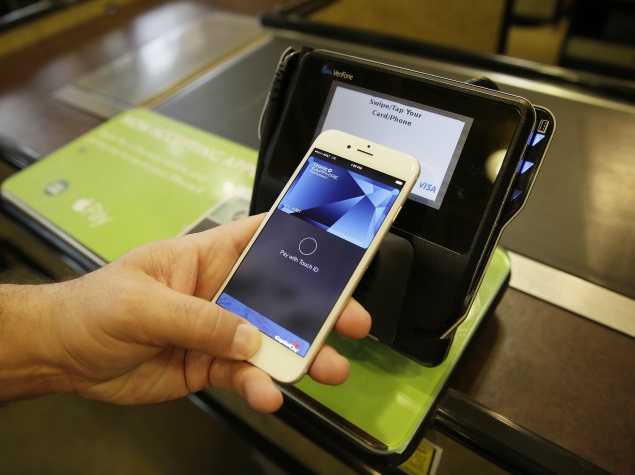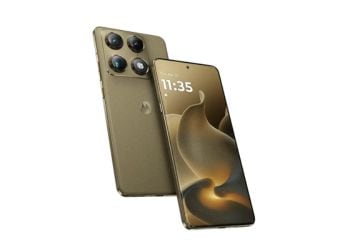- Home
- Mobiles
- Mobiles Features
- No Cash, No Cards: Just Mobile Pay for a Week
No Cash, No Cards: Just Mobile Pay for a Week

Apple Pay has gotten a lot of attention in recent weeks, but there are lots of other mobile-payment systems. Google Wallet uses a similar wireless technology called NFC, or near-field communication. Starbucks and Dunkin' Donuts have apps that generate bar codes for their stores. A phone case called LoopPay mimics the signals produced by card swipes so you can pay with your phone just about anywhere credit cards are accepted - at least in theory.
The good news: I didn't get arrested for failing to pay my debts. But on two occasions, friends had to buy me drinks. Another night I had to borrow $43 in cash. And I prepaid for drinks at one bar because I couldn't leave a card to keep the tab open.
I know many people aren't going to leave all cash and cards behind, even once these payment systems take off. I did it to challenge myself to find places that accept them.
The week began on Sunday, Nov. 2, the day of the New York City Marathon. Apart from subway rides, my expenses were included with my $227 registration fee. But when it came time to celebrate, drinks at the local bars I went to required cash or plastic. Fortunately, I was able to use the "I just ran a marathon" excuse on friends. Fast forward to the end of the week, when I used the last ride on my transit card and had to walk 2.5 miles home from a "Sesame Street" exhibit. By that time, I was already wearing jeans to work because I couldn't use coins for laundry.
(Also See: The Pros and Cons of Mobile Payment Systems)
So what did I discover?
Many smaller merchants probably have the right equipment, but don't know it.
MasterCard's Nearby app has a database of locations where customers have successfully made NFC payments, such as with Apple Pay, Google Wallet and Softcard. Included are a few dozen retail chains that have signed up with Apple Pay. But I was surprised to find many locally run restaurants, nail salons, doctor's offices and other smaller businesses, too.
However, when I went to those businesses - a diner, a Thai restaurant, a deli, a wine shop and coffee shop - employees knew nothing about NFC. MasterCard says many equipment makers and payment processors still have to get the word out to merchants. With some equipment, it's not obvious NFC payments are accepted until you tap the phone.
So even though lots of smaller merchants are expected to get NFC-capable equipment within the next year because of security-driven upgrades to credit and debit cards, they'll need to be made aware of this feature. And they'll have to train their workers on how to use it.
Things will get smoother.
When I started testing mobile payments two years ago, I had a frustrating time getting the Dunkin' Donuts app to work. But in the past month or so, it has worked flawlessly. The same is true with Starbucks' app. It's clear employees at both chains have gotten used to mobile payments and how to scan the bar codes on the apps.
(Also See: iPhone 6 and iPhone 6 Plus NFC Chips Only for Use With Apple Pay)
Likewise, when I used Apple Pay at McDonald's on the day of its debut, I had to try a few times as the employee looked befuddled. Just two weeks later, the woman at the register was able to guide me on where to place my phone. She told me she's seen a couple of people do it.
Even without formal training, customers and merchants will get more comfortable over time as they see others work out the kinks.
I need to lower my expectations.
In my experience, these systems don't always work on the first try. With LoopPay, for instance, I'm supposed to hold the back of my phone case near the retailer's magnetic card reader and then hit a button on the case. But after multiple failed attempts at a restaurant, I had to borrow money. So when LoopPay did work on the first try at my dentist, I was elated - though it meant I was out $2,500 in a flash.
I also realize it's going to be tough to get mobile payments working everywhere. It's one thing to leave cash or cards on a tray for waitstaff. It's another to have to get up from the table to verify a transaction with a fingerprint or demonstrate how to hold the device. OpenTable and Harbortouch have apps to enable Apple Pay at the table, but they work only with a few restaurants.
Plastic or ...?
Although mobile payments aren't easier than whipping out plastic in many circumstances, I am glad to have Apple Pay for cab fare. My phone is generally out anyway, and I don't have to worry about dropping an ID or keys as I pull out my wallet. It's also nice to leave behind store-specific cards, such as Starbucks', to thin out my wallet.
I do plan on continuing to use mobile payments, but I'll bring cash and cards along, too - just in case.
And that reminds me: I still need to pay my friend back now that I have money again.
Catch the latest from the Consumer Electronics Show on Gadgets 360, at our CES 2026 hub.
Related Stories
- Samsung Galaxy Unpacked 2025
- ChatGPT
- Redmi Note 14 Pro+
- iPhone 16
- Apple Vision Pro
- Oneplus 12
- OnePlus Nord CE 3 Lite 5G
- iPhone 13
- Xiaomi 14 Pro
- Oppo Find N3
- Tecno Spark Go (2023)
- Realme V30
- Best Phones Under 25000
- Samsung Galaxy S24 Series
- Cryptocurrency
- iQoo 12
- Samsung Galaxy S24 Ultra
- Giottus
- Samsung Galaxy Z Flip 5
- Apple 'Scary Fast'
- Housefull 5
- GoPro Hero 12 Black Review
- Invincible Season 2
- JioGlass
- HD Ready TV
- Laptop Under 50000
- Smartwatch Under 10000
- Latest Mobile Phones
- Compare Phones
- Samsung Galaxy A07 5G
- Vivo Y500i
- OnePlus Turbo 6V
- OnePlus Turbo 6
- Itel Zeno 20 Max
- OPPO Reno 15 Pro Mini 5G
- Poco M8 Pro 5G
- Motorola Signature
- Lenovo Yoga Slim 7x (2025)
- Lenovo Yoga Slim 7a
- Realme Pad 3
- OPPO Pad Air 5
- NoiseFit Pro 6R
- Xiaomi Watch 5
- Acerpure Nitro Z Series 100-inch QLED TV
- Samsung 43 Inch LED Ultra HD (4K) Smart TV (UA43UE81AFULXL)
- Asus ROG Ally
- Nintendo Switch Lite
- Haier 1.6 Ton 5 Star Inverter Split AC (HSU19G-MZAID5BN-INV)
- Haier 1.6 Ton 5 Star Inverter Split AC (HSU19G-MZAIM5BN-INV)

















